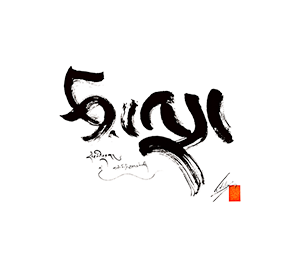Primary Sources
Sources for Buddha-Nature Teachings
This page provides a listing of some of the key sources for buddha nature teachings found in the sutras, as well as the key texts found in Sanskrit, Chinese, and Tibetan traditions, as well as influential commentaries from centuries of traditional scholarship on the subject.
The Titles of the Text[edit]
For more detail on the meanings of the terms in the title, see the excerpt from When the Clouds Part by Karl Brunnhölzl here.
The title Ratnagotravibhāga Mahāyānottaratantraśāstra[1] is attested in the surviving Sanskrit manuscripts. It roughly translates as “The Ultimate Teaching (uttaratantra)[2] of the Mahāyāna, A Treatise (śāstra) Analyzing (vibhāga) the Jewel (ratna) Disposition (gotra).” One surviving Sanskrit reference, Abhayākaragupta’s Munimatālaṃkāra, gives the name as Mahāyānottara: [Treatise] on the Ultimate Mahāyāna [Doctrine].[3] Western scholars only became aware of Sanskrit versions in the 1930s (see below); prior to this, they knew the text only in Chinese or Tibetan translation, and this was complicated by the fact that both the Chinese and the Tibetan traditions divide the text into two. Where in India the Ratnagotravibhāga was a single work comprised of root verses, explanatory verses, and prose commentary, the Chinese and Tibetan translators and commentators considered the root and explanatory verses to be one text and the complete text, including the prose commentary, to be a second. Thus not only do we have multiple names in multiple languages for the treatise, but multiple names in Chinese and Tibetan for its different parts....
Ratnagotravibhāga Mahāyānottaratantraśāstra
The Texts[edit]
Sutras[edit]
Commentaries[edit]
Further Reading[edit]
- According to the Sanskrit grammatical rules associated with sandhi, the word boundaries of the “a” of Mahāyāna and the “u” of Uttaratantra combine as “o.” The title could just as easily be rendered “Mahāyāna Uttaratantra Śāstra.”
- See the more detailed discussion of the translation of this term here: Continuum vs. Teachings: Discrepancies in the Translation of the Term Tantra (rgyud) in the Subtitle of the Ratnagotravibhāga.
- Kano, K. Buddha-Nature and Emptiness, 27, note #41.
